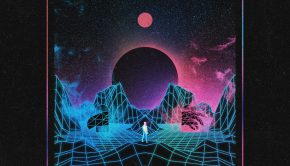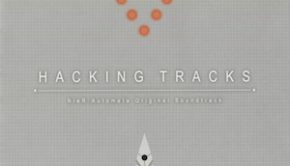James Hannigan Interview: New Command & Conquer Scores
British composer James Hannigan’s video game scores span from sports titles to movie adaptations to war titles. He is best known for recently taking the leading roles on both the Harry Potter and Command & Conquer franchises on behalf of EA. His fantasy scores for the latest Harry Potter games have won awards and nominations from The International Film Music Critics Association and BAFTA. He has since recorded with the London Philharmonia and Skywalker Symphony for the Command & Conquer titles Red Alert 3, Uprising, and Tiberian Twilight.
In an inspiring interview, Hannigan discusses his experiences and perpectives about video game music. He focuses on his works on the Command & Conquer and Harry Potter, but also provides a glimpse into his work in other areas too, such as his early years as a resident composer at Electronic Arts, his surprising role in Cloudy with a Chance of Meatballs, and his recent involvement in the popular television series Primeval.
Interview Credits
Interview Subject: James Hannigan
Interviewer: Chris Greening
Editor: Chris Greening
Coordination: Greg O’Connor-Read
Interview Content
Chris: James Hannigan, thank you for taking the time to talk to us today. First of all, could you tell us a little about yourself for those who aren’t already familiar with you and give an overview of your musical background and influences?
James Hannigan: I’ve been composing professionally for around sixteen years. After starting out intending mostly to work in film and TV, I was offered a job quite quickly as an in-house composer at EA in 1995, where I then spent a few years before going freelance again. I’d already cut my teeth in games before that though, alongside composing quite a lot of library music and little bits and pieces for TV. I gained some useful experience while at EA, working on numerous EA Sports titles, games such asPrivateer: The Darkening, and others, plus I got to grips with various techniques for creating so-called ‘interactive music’.

I’m influenced by many composers, from all walks of life and backgrounds, ranging from the very obscure to the very well-known. From film, there are perennial favourites such as Miklos Rozsa, Bernard Herrmann, Jerry Goldsmith and John Williams, but I also enjoy the work of more recently emerged film composers, such as Harry Gregson-Williams and John Powell. I think certain names tend to come up time and time again with composers of my generation for a number of reasons. One being that these belong to a small number of composers whose output was not only great but also very widely disseminated by cinema and television while we were growing up. But another is that they were some of the composers who had created the ground rules when it came to the art of scoring films and television as we know it today, developing much of the language still widely in use now. Obviously, that evolution is still going on, but there are many more composers in circulation now in TV and film in particular, and many more entertainment products in general.
Interestingly, I think game music is going through a similar process of evolution at the moment, and new ground is being broken all the time — and game composers are rightfully standing out as well. People working in games are still trying to work out exactly what it is they are trying to achieve with the medium and writing for games is increasingly becoming recognised as distinct, with its own set of musical needs and approaches. So, all in all, I feel it’s an exciting time to be working in the industry! I also love the work of many classical and contemporary composers of concert music, but there are just too many names to begin mentioning here.
Chris: You decided to jump straight into becoming an in-house composer at Electronic Arts in 1995. Please could you give some insight into your decision? What was it work under such a large company during this period?
James Hannigan: Getting started in music has been difficult in any era. When I got involved in games, things were very competitive, but in a slightly different way from now. There were fewer projects around, but also fewer people doing it. Now, there are more things happening but many more people want to do it. So it balances out a little. I belonged to the first generation of young people who’d really grown up with games, so I felt I understood the potential of the medium and believed the industry was only going to grow and flourish, which it has done. So taking the job at EA felt like a no-brainer.
I started working in games just as it was becoming possible to stream music from CD or hard disk, meaning that any live or recordable music could now be played back in games, and I found that very exciting at the time. For a composer then though, it felt like quite a brave step, as many aspiring composers of the time sought mostly to work in the music industry, film and TV. Now I think it’s more of a level playing field.
Chris: As a freelancer, you came to prominence working on titles such as Conquest: Frontier Wars, Brute Force, and the appropriately titled FreeLancer. Could you share your experiences on these projects and how they influenced your career?
James Hannigan: A few years before those, I’d composed for the Origin title, Privateer: The Darkening while at EA, and one of the producers of that had a lot of involvement with the formation of Digital Anvil. Martin Galway, the audio director at the company, got in touch and we went from there. As a teenager, I’d heard a lot of Martin’s music in various C64 games, so it was really great to be working with him — and we’ve been in touch ever since.

Chris: Nevertheless, probably your biggest break in the realms of action scoring was Command & Conquer: Red Alert 3. Could you elaborate on how you portrayed the Empire of the Rising Sun faction on this title? Did your responsibilities expand in the subsequent Uprising expansion?
James Hannigan: Working on RA3 was a lot of fun. Although I worked mostly on the Empire faction’s music, I also scored numerous cut scenes for the game, plus composed the front-end theme, “Soviet March”. When invited back to work on Uprising, I got a lot more involved with the in-game music, for Yuriko in particular, plus again composed the front-end theme, sung by the wonderful and very versatile Miriam Stockley. I’d really love to do more in that direction, but you can’t always pick and choose the projects you work on and you never know where the work will lead you next. After I worked on Evil Genius and Republic: The Revolution, I had a similar sensation of wanting to do more music in those styles, but I’m still waiting for the opportunity!
Chris: On Command & Conquer 4: Tiberian Twilight, you took the leading role. Could you elaborate on what direction you took the music in? Do you agree with Jason Grave’s statements that this is the most dark and dramatic score of the series?
James Hannigan: I’d definitely agree with Jason that the overall tone is darker than ever before. The direction we went in was, for a large part, determined by the audio director on the project, Nick Laviers, who felt the score should be darker and generally more dissonant than other entries in the series. But there’s still quite a lot of diversity there, and the NOD music in particular I think is a departure from the orchestral nature of the GDI music, for example.
Chris: You recorded with full orchestras on both of these Command & Conquer titles. Did you enjoy recording work with the Skywalker Symphony and London Philharmonia on these productions? What did they bring to the overall musical experience?
James Hannigan: The Skywalker Symphony Orchestra and London Philharmonia are among the best in the world, so they bring a great deal of professionalism and musicality to whatever they play. For C&C4, Jason, Nick and I got together at Air Studios to record the Philharmonia for a portion of the game’s music, and it was a really enjoyable and productive day! But we also independently recorded other musicians. For example, I recorded a Tibetan singer and a boys choir in London, and Tim Wynn recorded a Bulgarian choir in LA.

Chris: In addition to Command & Conquer franchise, you are widely known for your contributions to the latest Harry Potter video games, Order of the Phoenix and Half-Blood Prince. What was it like to inherit the legacies of Jeremy Soule and John Williams on these franchises? To what extent were you influenced by their previous approaches?
James Hannigan: I don’t think I was directly influenced by any individual pieces or cues, but obviously mindful of what had gone before, having a great deal of respect for all the composers involved. There’s a certain sound world associated with Harry Potter, but it’s also one that taps into a broader style of magical, fantasy music. So it’s perhaps not too difficult to be fairly appropriate without directly referring to any particular entry in the series. Stylistically there’s an attempt to stay on the same page, but you can still be yourself as a composer at the same time.
The games occasionally make use of the Harry Potter theme, “Hedwig’s Theme”, and I do think that’s very helpful from the point of view of creating a meaningful link with the films. I’m a great believer in the power of leitmotif as well, and I love the way John Williams makes use of this technique in many of his film scores. As for Jeremy Soule, I’d heard his music for earlier entries in the series and was suitably impressed — so it was quite daunting trying to fill his shoes when coming on board.
Chris: One particularly remarkable feature of your Harry Potter scores is their highly thematic nature. Could you elaborate on how you developed memorable and distinctive melodies for these scores? How did you ensure your leitmotifs became suitably reinforced in both game and album release alike?
James Hannigan: That’s an interesting question because there’s often this challenge with games of how you go about balancing satisfying linear music, of the kind that takes some time to unfold and is hopefully pleasant to hear in isolation, with the needs of a game and the constraints of an ‘interactive’ music system. With the last two games I made an effort to do both at the same time, so what ended up in the soundtrack release (when it was available) was the result of various related bits and pieces getting stitched together to form a more coherent and structured listening experience.
In the game itself, however, these elements were often used in quite different ways, as the function of the music can be quite different. Music isn’t always there to support the narrative, for example, but frequently gets chopped and changed as you play, very often going with situations or locations — plus it can go on indefinitely. At its worst, I think interactive music can kill musicality, but at it’s best it can be quite an enhancement.

Chris: There is also a strong likelihood that a video game adaptation of the final Harry Potter book,Harry Potter and the Deathly Hallows, will be made. If there is, would you be interested in returning? How would you aim to wrap up the franchise musically?
James Hannigan: I’d love to return to the series and it would be great to end the series with a bang!
Chris: Last year, you also worked on the video game adaptation of Cloudy with a Chance of Meatballs<. What sort of music did you feel suited this quirky project? Did your work on previous book-to-game and film-to-game adaptations influence your approach at all?
James Hannigan: I really enjoyed working on Cloudy, and it was a relatively well-resourced production, recording the Chamber Orchestra of London at Abbey Road Studio 1 over a couple of sessions. I was quite pleased with what we came away with. It was fun and quirky, but I suppose it’s true to say that it got a little overlooked and overshadowed by the film itself!
Chris: This year, you are also producing the score for the latest Lord of the Rings title, Aragorn’s Quest. Could you give us a preview of what to expect from the score? Should we anticipate a soundtrack release?
James Hannigan: I’m not really at liberty to discuss this project, apart from mentioning the mere fact I’m working on it! But I will say, however, that it’s been enjoyable and I very much like the game.
Chris: You’ve also been involved in one of the United Kingdom’s biggest television shows, Primeval. Could you share your experiences on this series and how it compared to working with video games?
James Hannigan: Working on series 3 was an enjoyable — if very intense — experience. It certainly teaches you to work quickly, as a single episode of a show like that can require forty minutes or more of music. The role of music can be very different though, unless we’re talking about cutscenes or linear sequences in games.

Music for film and TV is mostly treating the viewer as a passive audience — rather than an active participant — in the story world, and that has implications for what you say with music. With TV, it’s much more about music for narrative support, in the sense that you are directly led by the story and visuals. You know the audience are aware that they exist outside of the story space and you wish to engage them in this way. And, conversely, you know the on-screen characters know nothing of their audience. In games, however, the lines are blurred and very often you are trying to ‘situate’ players in the game world and suggest they actually exist there, so you don’t always want to attract attention to somewhat redundant narrative music in the background. That’s probably why there is so much atmospheric music in games, as it’s the sort of music that evokes emotion yet doesn’t advertise its existence very much. It’s more a case of music for situations and ‘game states’ that motivate music in games.
Chris: We’re very grateful to have had this opportunity to talk to you. To finish, is there anything else you’d like to say and is there any message you’d like to leave to readers around the world?
James Hannigan: Yes — please go on supporting and recognising music in games! Doing this work isn’t just a job for composers, it’s a passion, so it’s really great to know that the work gets noticed.
Many thanks to Greg O’Connor Read for coordinating this interview. The Command & Conquer 4 Tiberian Twilight Original Soundtrack is available as an iTunes download here. Learn more about James Hannigan at his official website.
Posted on May 9, 2010 by Chris Greening. Last modified on March 7, 2014.














